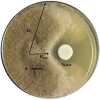Antifungal activity of non-conventional yeasts against Botrytis cinerea and non -Botrytis grape bunch rot fungi
- PMID: 36081805
- PMCID: PMC9445577
- DOI: 10.3389/fmicb.2022.986229
Antifungal activity of non-conventional yeasts against Botrytis cinerea and non -Botrytis grape bunch rot fungi
Abstract
Grapes harbour a plethora of non-conventional yeast species. Over the past two decades, several of the species have been extensively characterised and their contribution to wine quality is better understood. Beyond fermentation, some of the species have been investigated for their potential as alternative biological tools to reduce grape and wine spoilage. However, such studies remain limited to a few genera. This work aimed to evaluate the antagonistic activity of grape must-derived non-conventional yeasts against Botrytis cinerea and non-Botrytis bunch-rotting moulds and to further elucidate mechanisms conferring antifungal activity. A total of 31 yeast strains representing 21 species were screened on different agar media using a dual culture technique and liquid mixed cultures, respectively. Pichia kudriavzevii was the most potent with a minimum inhibitory concentration of 102 cells/mL against B. cinerea but it had a narrow activity spectrum. Twelve of the yeast strains displayed broad antagonistic activity, inhibiting three strains of B. cinerea (B05. 10, IWBT FF1 and IWBT FF2), a strain of Aspergillus niger and Alternaria alternata. Production of chitinases and glucanases in the presence of B. cinerea was a common feature in most of the antagonists. Volatile and non-volatile compounds produced by antagonistic yeast strains in the presence of B. cinerea were analysed and identified using gas and liquid chromatography mass spectrometry, respectively. The volatile compounds identified belonged mainly to higher alcohols, esters, organosulfur compounds and monoterpenes while the non-volatile compounds were cyclic peptides and diketopiperazine. To our knowledge, this is the first report to demonstrate inhibitory effect of the non-volatile compounds produced by various yeast species.
Keywords: Wickerhamomyces anomalus; antagonistic yeasts; biological control; cell wall lytic enzymes; volatile organic compounds.
Copyright © 2022 Maluleke, Jolly, Patterton and Setati.
Conflict of interest statement
The authors declare that the research was conducted in the absence of any commercial or financial relationships that could be construed as a potential conflict of interest.
Figures





Similar articles
-
Biocontrol potential of wine yeasts against four grape phytopathogenic fungi disclosed by time-course monitoring of inhibitory activities.Front Microbiol. 2023 Mar 7;14:1146065. doi: 10.3389/fmicb.2023.1146065. eCollection 2023. Front Microbiol. 2023. PMID: 36960294 Free PMC article.
-
Biocontrol ability and action mechanism of food-isolated yeast strains against Botrytis cinerea causing post-harvest bunch rot of table grape.Food Microbiol. 2015 May;47:85-92. doi: 10.1016/j.fm.2014.11.013. Epub 2014 Dec 5. Food Microbiol. 2015. PMID: 25583341
-
Biocontrol Ability and Action Mechanism of Starmerella bacillaris (Synonym Candida zemplinina) Isolated from Wine Musts against Gray Mold Disease Agent Botrytis cinerea on Grape and Their Effects on Alcoholic Fermentation.Front Microbiol. 2016 Aug 15;7:1249. doi: 10.3389/fmicb.2016.01249. eCollection 2016. Front Microbiol. 2016. PMID: 27574517 Free PMC article.
-
Grapevine bunch rots: impacts on wine composition, quality, and potential procedures for the removal of wine faults.J Agric Food Chem. 2013 Jun 5;61(22):5189-206. doi: 10.1021/jf400641r. Epub 2013 May 28. J Agric Food Chem. 2013. PMID: 23675852 Review.
-
Non-Botrytis grape-rotting fungi responsible for earthy and moldy off-flavors and mycotoxins.Food Microbiol. 2014 Apr;38:104-21. doi: 10.1016/j.fm.2013.08.013. Epub 2013 Sep 6. Food Microbiol. 2014. PMID: 24290633 Review.
Cited by
-
Biocontrol potential of wine yeasts against four grape phytopathogenic fungi disclosed by time-course monitoring of inhibitory activities.Front Microbiol. 2023 Mar 7;14:1146065. doi: 10.3389/fmicb.2023.1146065. eCollection 2023. Front Microbiol. 2023. PMID: 36960294 Free PMC article.
-
Unravelling the transcriptomic dynamics of Hyphopichia pseudoburtonii in co-culture with Botrytis cinerea.PLoS One. 2025 Jan 14;20(1):e0316713. doi: 10.1371/journal.pone.0316713. eCollection 2025. PLoS One. 2025. PMID: 39808607 Free PMC article.
-
Endophytic Diversity in Sicilian Olive Trees: Identifying Optimal Conditions for a Functional Microbial Collection.Microorganisms. 2025 Jun 27;13(7):1502. doi: 10.3390/microorganisms13071502. Microorganisms. 2025. PMID: 40732010 Free PMC article.
-
Towards unlocking the biocontrol potential of Pichia kudriavzevii for plant fungal diseases: in vitro and in vivo assessments with candidate secreted protein prediction.BMC Microbiol. 2023 Nov 18;23(1):356. doi: 10.1186/s12866-023-03047-w. BMC Microbiol. 2023. PMID: 37980509 Free PMC article.
-
The Use of Specific Non-Saccharomyces Yeasts as Sustainable Biocontrol Solutions Against Botrytis cinerea on Apples and Strawberries.J Fungi (Basel). 2025 Jan 2;11(1):26. doi: 10.3390/jof11010026. J Fungi (Basel). 2025. PMID: 39852445 Free PMC article.
References
-
- Abbey J. A., Percival D., Abbey L., Asiedu S. K., Prithiviraj B., Schilder A. (2019). Biofungicides as alternative to synthetic fungicide control of grey mould (Botrytis cinerea)–prospects and challenges. Biocontrol Sci. Tech. 29, 207–228. doi: 10.1080/09583157.2018.1548574 - DOI
-
- Arrarte E., Garmendia G., Rossini C., Wisniewski M., Vero S. (2017). Volatile organic compounds produced by Antarctic strains of Candida sake play a role in the control of postharvest pathogens of apples. Biol. Control 109, 14–20. doi: 10.1016/j.biocontrol.2017.03.002 - DOI
LinkOut - more resources
Full Text Sources
Miscellaneous

